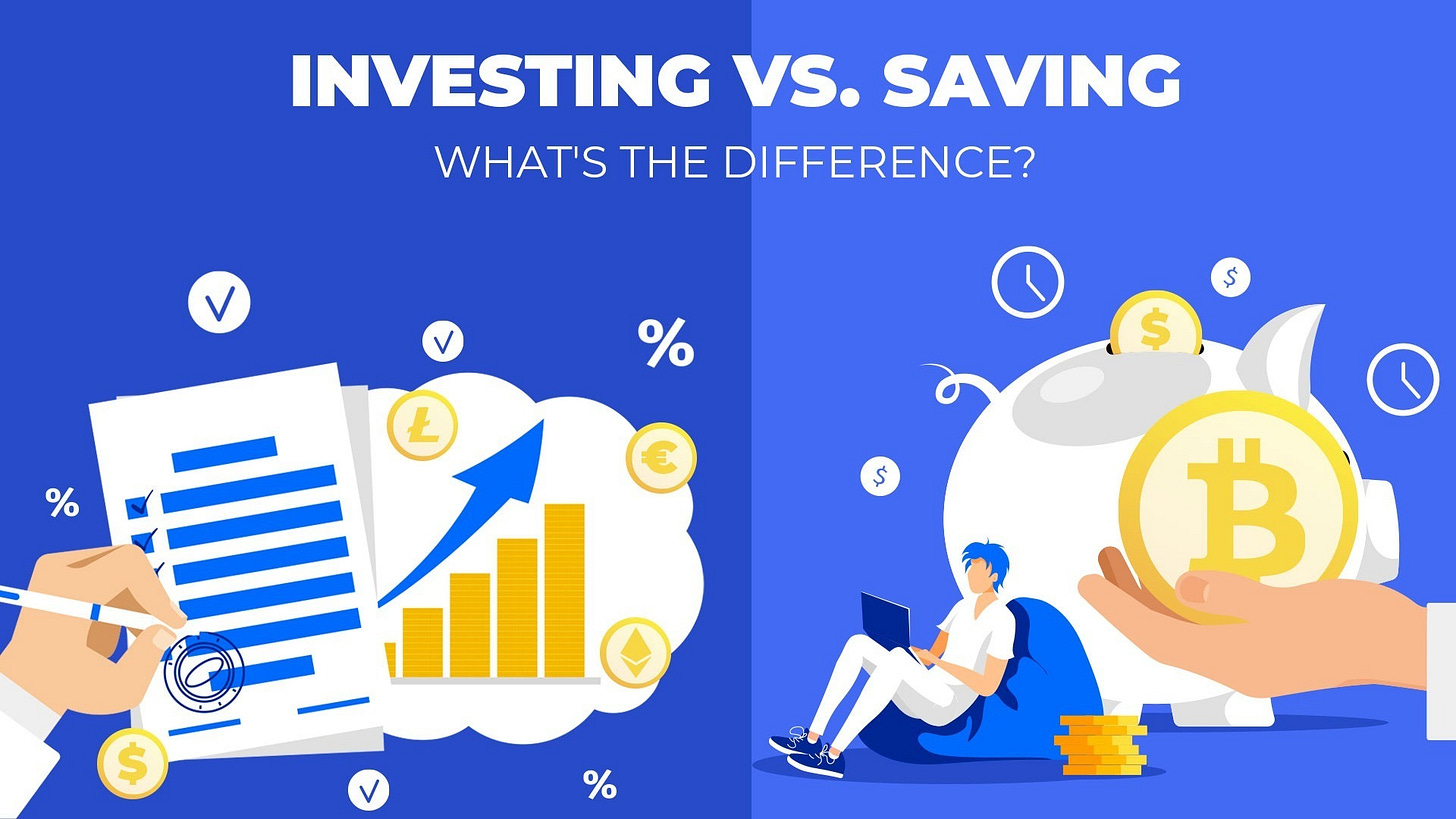Saving vs. Investing: What's the Difference and Why It Matters
Saving and investing are two terms that are often used interchangeably, but they refer to two distinct financial activities
It’s been a while since my last post. With loadshedding, work, and ministry commitments, it’s been hard to find some time to put something together. However, that is no excuse, so here is a short post about saving and investing.
Saving and investing are two terms that are often used interchangeably, However, they refer to two distinct financial activities. Both saving and investing involve putting money aside for future use, but there are some key differences between the two.
Saving vs Investing
Saving refers to the act of putting money away in a safe and accessible place, such as a savings account or a piggy bank. The goal of saving is to accumulate a sum of money over time, usually for a specific short-term goal, such as buying a car, going on vacation, or building an emergency fund.
Investing, on the other hand, refers to the act of using money to purchase assets that are expected to increase in value over time, such as stocks, bonds, mutual funds, or real estate. The goal of investing is to grow your wealth over the long-term and generate income, such as dividends or rental income.
Here are some of the key differences between saving and investing:
Risk: Saving is generally considered to be a low-risk activity, as the money is typically held in a savings account or other safe and insured investment vehicles, such as a certificate of deposit (CD). Investing, on the other hand, involves a higher degree of risk, as the value of assets can fluctuate over time. While investing can offer higher returns than saving, it also carries a higher risk of loss.
Return: The return on savings is usually lower than the return on investments, as savings accounts and CDs typically offer a fixed interest rate that is lower than the rate of inflation. Investing, on the other hand, has the potential to offer higher returns over the long-term, as the value of assets can appreciate over time.
Timeframe: Saving is generally a short-term activity, as the money is being put aside for a specific goal that is expected to be achieved within a few years. Investing, on the other hand, is a long-term activity, as the value of assets tends to increase over time. Investing is usually done with a long-term goal in mind, such as saving for retirement or a child's education.
Liquidity: Savings are generally more liquid than investments, meaning that they can be accessed and used more easily without incurring penalties or fees. Investments, on the other hand, may be subject to penalties or fees for early withdrawal, and may take time to sell or liquidate.
In conclusion, while saving and investing may seem similar, they are two distinct financial activities with different goals, risks, returns, timeframes, and liquidity. Both activities are important for achieving financial security and independence, but the key is to strike a balance between the two that meets your individual financial goals and risk tolerance.
*Disclaimer: Any information herein is not intended nor does it constitute financial, tax, legal, investment, or other advice. Before making any decision or taking any action regarding your finances, you should consult a qualified Financial Adviser. Furthermore, all views and opinions expressed are of my own and are not the views or opinions of any institution that I am apart of.




